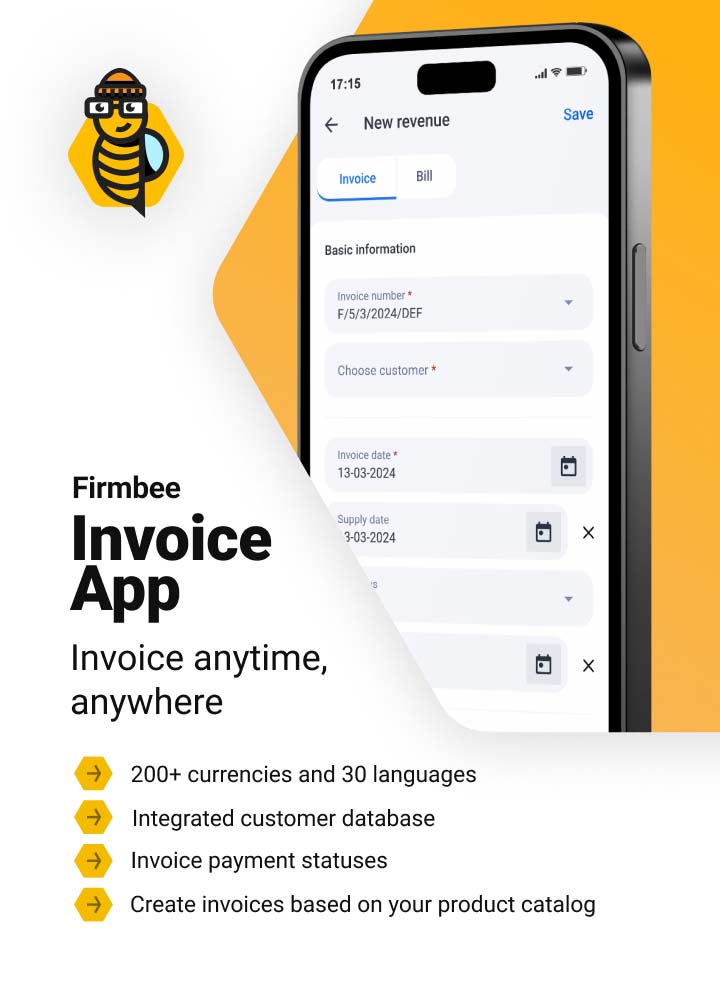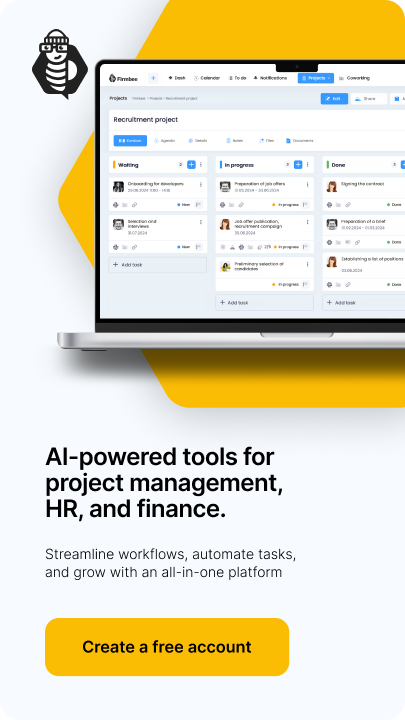Although we don’t always realize it, natural language processing (NLP) is an integral part of modern business technology. Large Language Models (LLMs), which have become prominent with ChatGPT, are a subset of this broad field.
Natural Language Processing (NLP) – table of contents:
But are ChatGPT or Google Bard the best for all business tasks? Of course not! What then are other business applications of NLP, and how does natural language processing technology benefit business and shape its future?
What is natural language processing?
Natural language processing (NLP) is a technology that enables machines to understand, interpret and generate human language. Its main goal is to allow human-machine communication in natural human speech. To carry on a casual conversation, NLP models must be able to understand context, linguistic nuances and even jokes and sarcasm.
Only large language models (LLMs) can perform these most difficult tasks. Thanks to the vast amount of data they have been trained on, they can understand the subtleties of language and generate answers that are not only technically correct but also sound natural and human.
However, NLP is not just about big language models. Indeed, many of the applications of NLP do not require such powerful tools. If AI is processing credit applications, its language skills don’t need to be great. All it needs is to learn how to search through various types of templates and forms and find the fields in them that contain the necessary data. Such models are much smaller, simpler and require less computing power than LLM.
Why does your company need NLP?
Your company needs NLP first and foremost so that it can be managed based on data, and so that your employees don’t have to do necessary but simple and repetitive tasks and can focus more on the important tasks. But what specifically can artificial intelligence do for you?
- Listen to your customers. Analyze the tone and content of statements
- Don’t waste time searching. Finding information in scanned documents
- Respond quickly to threats and detect anomalies.
- Benefit from the experience of others. Knowledge management
- Skip repetitive steps. Automate natural language processing of documents
NLP enables a better understanding of customers by analyzing texts published on social media. Sentiment analysis and social listening, one application of NLP, helps companies understand what customers think about their products or services. For this purpose, you can try the following tools: Sentione, Brand24 or Hootsuite.
Although soon all company documents will have to be digital, there are still many companies sending out paper invoices and collecting fading receipts. Therefore, the second area where NLP can help is in finding information in company documents. An important part of machine understanding of what has been scanned is to distinguish relevant from irrelevant data. That is, recognizing essential information from, for example, the branding of the company that sent the document or accidental distortions.
The recognized documents, or the information read from them, are then transferred to a digital database. In this way, they are very easy to find. What’s more, they can provide input for further actions, for example:
Posting the expense from the photographed receipt, Entering the date of the meeting in the digital calendars of those invited to the charity concert, either Sending a personalized email to the customer to encourage feedback after the complaint process is complete.Language analysis can identify disturbing patterns that may indicate potential fraud or attacks. For example, a bank can monitor conversations to detect attempts to defraud customers, and your company can notice unusual occurrences. Other similar examples include:
Remote work reports – when someone forgets to turn off the hour meter overnight, Social media analysis – when suddenly there are an unusually high number of mentions of your company or The analysis of report files (log files) – helps detect errors in the functioning of the software.NLP can also contribute to better knowledge management in the organization by automatically creating meeting summaries and notes. This way, information is more easily accessible to all team members. Also, searching company documents on the intranet, the product knowledge base, or finding all purchases and documents related to a single customer can be surprisingly easy using NLP.
Natural language processing makes it possible to automate tedious tasks such as document processing, leading to time savings and increased productivity.
This is because automatic document processing primarily saves time and relieves employees from performing tedious and repetitive tasks that require high precision.
Let’s start with the simple transcription of data from paper documents into customer service programs. It may mean many hours of moving your eyes from a black-and-white table to a monitor screen, or it may be limited to putting a paper contract into a scanner and possibly handling ambiguities and exceptions.
However, automation in natural language processing is not just about handling written documents. AI can, using speech recognition, (STT), speech-to-text systems, create meeting summaries and notes, as they do, among others: Otter, Rev, or Descript.
Areas of application of AI and NLP in business
AI and natural language processing have many applications in business. Popular uses of these technologies in business are shown in the table below:
| Fixed written documents | Processing of insurance applications |
| Personalized automated mail handling | |
| Fixed spoken language | Automatic creation of subtitles for movies |
| Creating bibliographic suggestions | |
| Chatbots on e-commerce sites | |
| Social media content moderation | |
| Voice machine operation | |
| Therapeutic voicebots | |
| Many written languages | Automatic localization of mobile applications |
| Many spoken languages | Synchronous translation of international conferences |

Natural language processing in the future
Natural language processing (NLP) and artificial intelligence (AI) bring many benefits to business, from automation and increased efficiency to better understanding of customers, to creating natural user interfaces and knowledge management. These technologies are not only crucial to how companies operate today, but also have great potential for the future, opening up new opportunities for innovation and growth.
The future of natural language processing looks promising. It is marked by the unbelievably rapid development of LLMs, which are increasingly powerful and use multimodal solutions, that is, they learn to understand images and sound.
As a result, the technology is likely to become increasingly advanced, enabling machines to understand and generate human language even better. Given the achievements of researchers at Stanford University, who are successfully experimenting with digital agents that autonomously learn the language in a digital environment to accomplish their goals – the future of NLP looks bright and fascinating.
If you like our content, join our busy bees community on Facebook, Twitter, LinkedIn, Instagram, YouTube, Pinterest.
Author: Robert Whitney
JavaScript expert and instructor who coaches IT departments. His main goal is to up-level team productivity by teaching others how to effectively cooperate while coding.
AI in business:
- Threats and opportunities of AI in business (part 1)
- Threats and opportunities of AI in business (part 2)
- AI applications in business - overview
- AI-assisted text chatbots
- Business NLP today and tomorrow
- The role of AI in business decision-making
- Scheduling social media posts. How can AI help?
- Automated social media posts
- New services and products operating with AI
- What are the weaknesses of my business idea? A brainstorming session with ChatGPT
- Using ChatGPT in business
- Synthetic actors. Top 3 AI video generators
- 3 useful AI graphic design tools. Generative AI in business
- 3 awesome AI writers you must try out today
- Exploring the power of AI in music creation
- Navigating new business opportunities with ChatGPT-4
- AI tools for the manager
- 6 awesome ChatGTP plugins that will make your life easier
- 3 grafików AI. Generatywna sztuczna inteligencja dla biznesu
- What is the future of AI according to McKinsey Global Institute?
- Artificial intelligence in business - Introduction
- What is NLP, or natural language processing in business
- Automatic document processing
- Google Translate vs DeepL. 5 applications of machine translation for business
- The operation and business applications of voicebots
- Virtual assistant technology, or how to talk to AI?
- What is Business Intelligence?
- Will artificial intelligence replace business analysts?
- How can artificial intelligence help with BPM?
- AI and social media – what do they say about us?
- Artificial intelligence in content management
- Creative AI of today and tomorrow
- Multimodal AI and its applications in business
- New interactions. How is AI changing the way we operate devices?
- RPA and APIs in a digital company
- The future job market and upcoming professions
- AI in EdTech. 3 examples of companies that used the potential of artificial intelligence
- Artificial intelligence and the environment. 3 AI solutions to help you build a sustainable business
- AI content detectors. Are they worth it?
- ChatGPT vs Bard vs Bing. Which AI chatbot is leading the race?
- Is chatbot AI a competitor to Google search?
- Effective ChatGPT Prompts for HR and Recruitment
- Prompt engineering. What does a prompt engineer do?
- AI Mockup generator. Top 4 tools
- AI and what else? Top technology trends for business in 2024
- AI and business ethics. Why you should invest in ethical solutions
- Meta AI. What should you know about Facebook and Instagram's AI-supported features?
- AI regulation. What do you need to know as an entrepreneur?
- 5 new uses of AI in business
- AI products and projects - how are they different from others?
- AI-assisted process automation. Where to start?
- How do you match an AI solution to a business problem?
- AI as an expert on your team
- AI team vs. division of roles
- How to choose a career field in AI?
- Is it always worth it to add artificial intelligence to the product development process?
- AI in HR: How recruitment automation affects HR and team development
- 6 most interesting AI tools in 2023
- 6 biggest business mishaps caused by AI
- What is the company's AI maturity analysis?
- AI for B2B personalization
- ChatGPT use cases. 18 examples of how to improve your business with ChatGPT in 2024
- Microlearning. A quick way to get new skills
- The most interesting AI implementations in companies in 2024
- What do artificial intelligence specialists do?
- What challenges does the AI project bring?
- Top 8 AI tools for business in 2024
- AI in CRM. What does AI change in CRM tools?
- The UE AI Act. How does Europe regulate the use of artificial intelligence
- Sora. How will realistic videos from OpenAI change business?
- Top 7 AI website builders
- No-code tools and AI innovations
- How much does using AI increase the productivity of your team?
- How to use ChatGTP for market research?
- How to broaden the reach of your AI marketing campaign?
- "We are all developers". How can citizen developers help your company?
- AI in transportation and logistics
- What business pain points can AI fix?
- Artificial intelligence in the media
- AI in banking and finance. Stripe, Monzo, and Grab
- AI in the travel industry
- How AI is fostering the birth of new technologies
- The revolution of AI in social media
- AI in e-commerce. Overview of global leaders
- Top 4 AI image creation tools
- Top 5 AI tools for data analysis
- AI strategy in your company - how to build it?
- Best AI courses – 6 awesome recommendations
- Optimizing social media listening with AI tools
- IoT + AI, or how to reduce energy costs in a company
- AI in logistics. 5 best tools
- GPT Store – an overview of the most interesting GPTs for business
- LLM, GPT, RAG... What do AI acronyms mean?
- AI robots – the future or present of business?
- What is the cost of implementing AI in a company?
- How can AI help in a freelancer’s career?
- Automating work and increasing productivity. A guide to AI for freelancers
- AI for startups – best tools
- Building a website with AI
- OpenAI, Midjourney, Anthropic, Hugging Face. Who is who in the world of AI?
- Eleven Labs and what else? The most promising AI startups
- Synthetic data and its importance for the development of your business
- Top AI search engines. Where to look for AI tools?
- Video AI. The latest AI video generators
- AI for managers. How AI can make your job easier
- What’s new in Google Gemini? Everything you need to know
- AI in Poland. Companies, meetings, and conferences
- AI calendar. How to optimize your time in a company?
- AI and the future of work. How to prepare your business for change?
- AI voice cloning for business. How to create personalized voice messages with AI?
- Fact-checking and AI hallucinations
- AI in recruitment – developing recruitment materials step-by-step
- Midjourney v6. Innovations in AI image generation
- AI in SMEs. How can SMEs compete with giants using AI?
- How is AI changing influencer marketing?
- Is AI really a threat to developers? Devin and Microsoft AutoDev
- AI chatbots for e-commerce. Case studies
- Best AI chatbots for ecommerce. Platforms
- How to stay on top of what's going on in the AI world?
- Taming AI. How to take the first steps to apply AI in your business?
- Perplexity, Bing Copilot, or You.com? Comparing AI search engines
- ReALM. A groundbreaking language model from Apple?
- AI experts in Poland
- Google Genie — a generative AI model that creates fully interactive worlds from images
- Automation or augmentation? Two approaches to AI in a company
- LLMOps, or how to effectively manage language models in an organization
- AI video generation. New horizons in video content production for businesses
- Best AI transcription tools. How to transform long recordings into concise summaries?
- Sentiment analysis with AI. How does it help drive change in business?
- The role of AI in content moderation


















